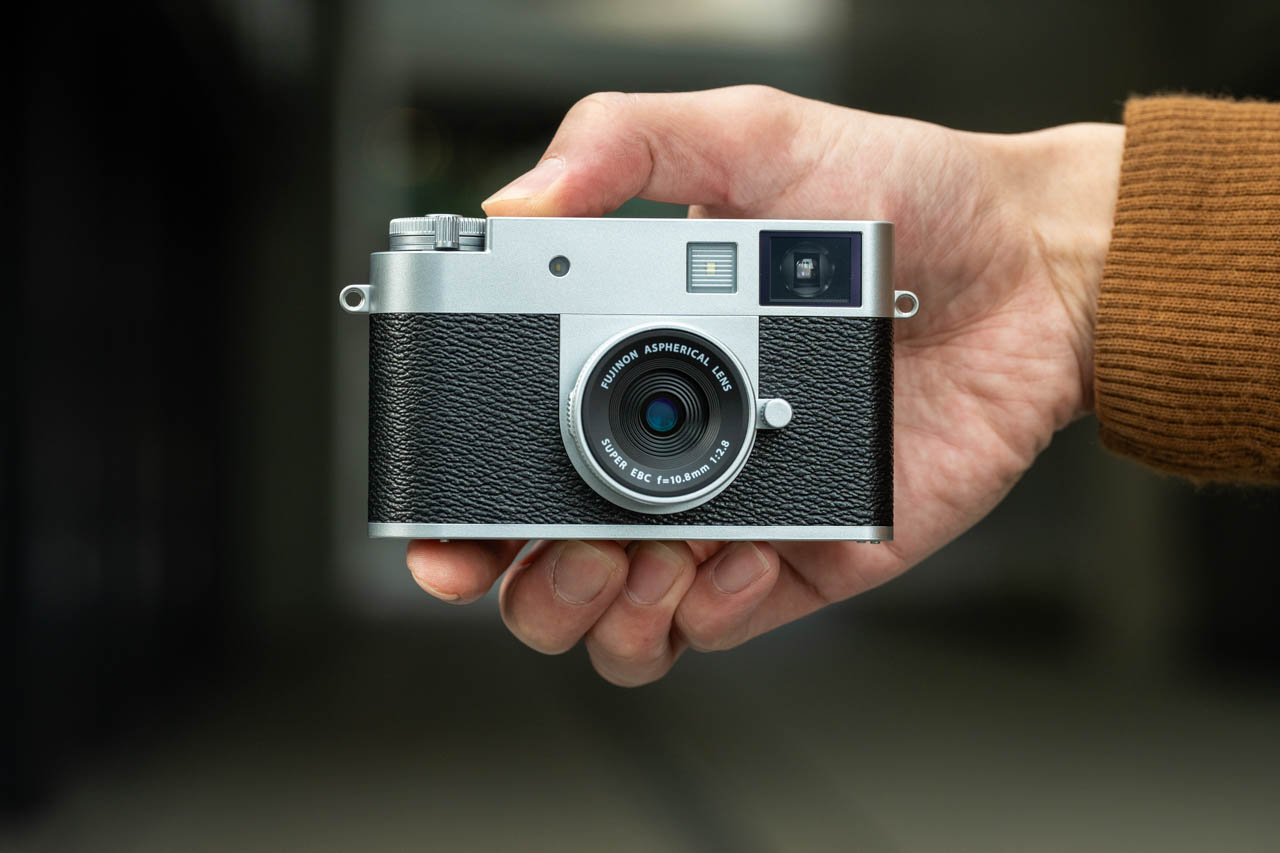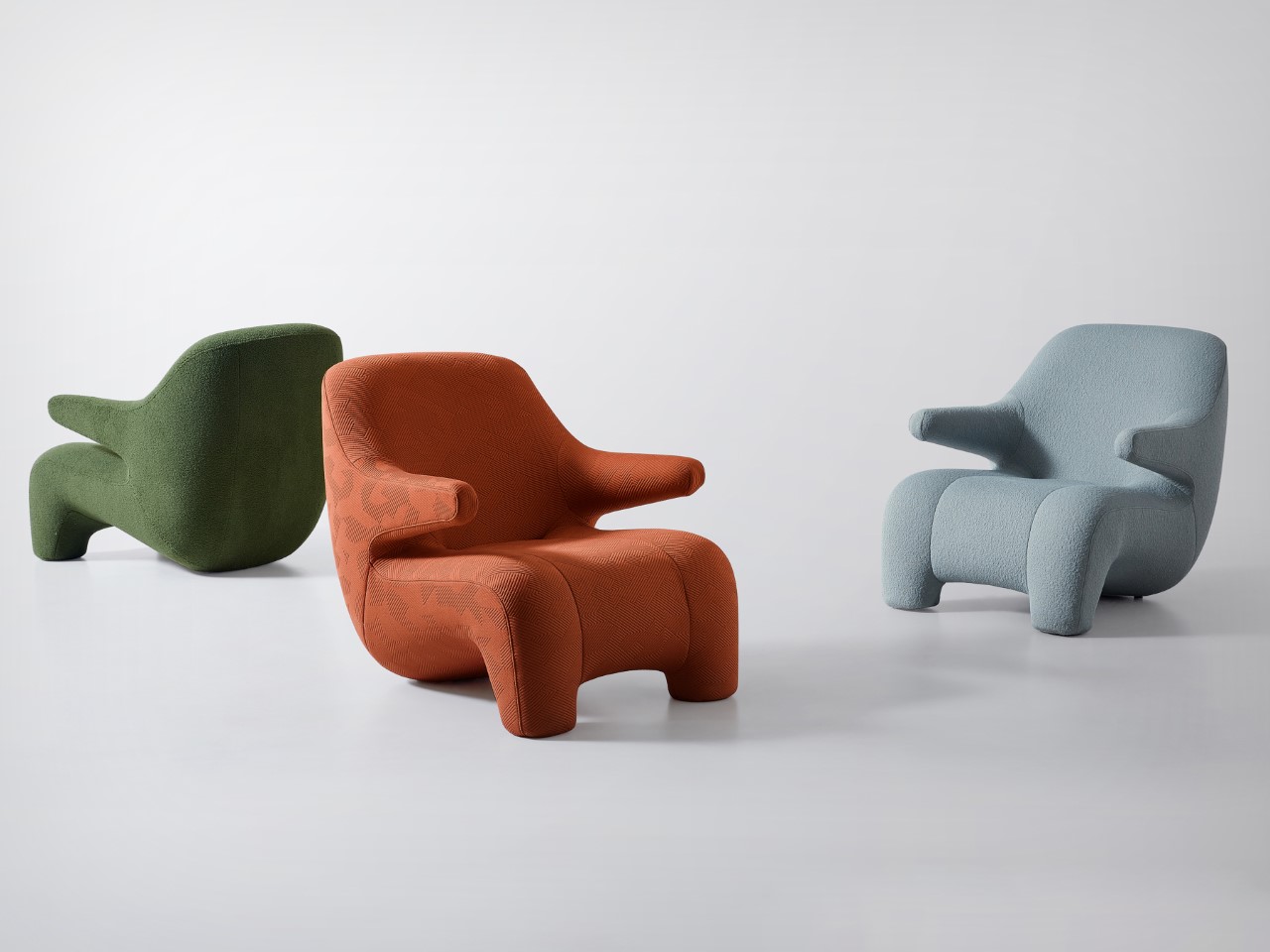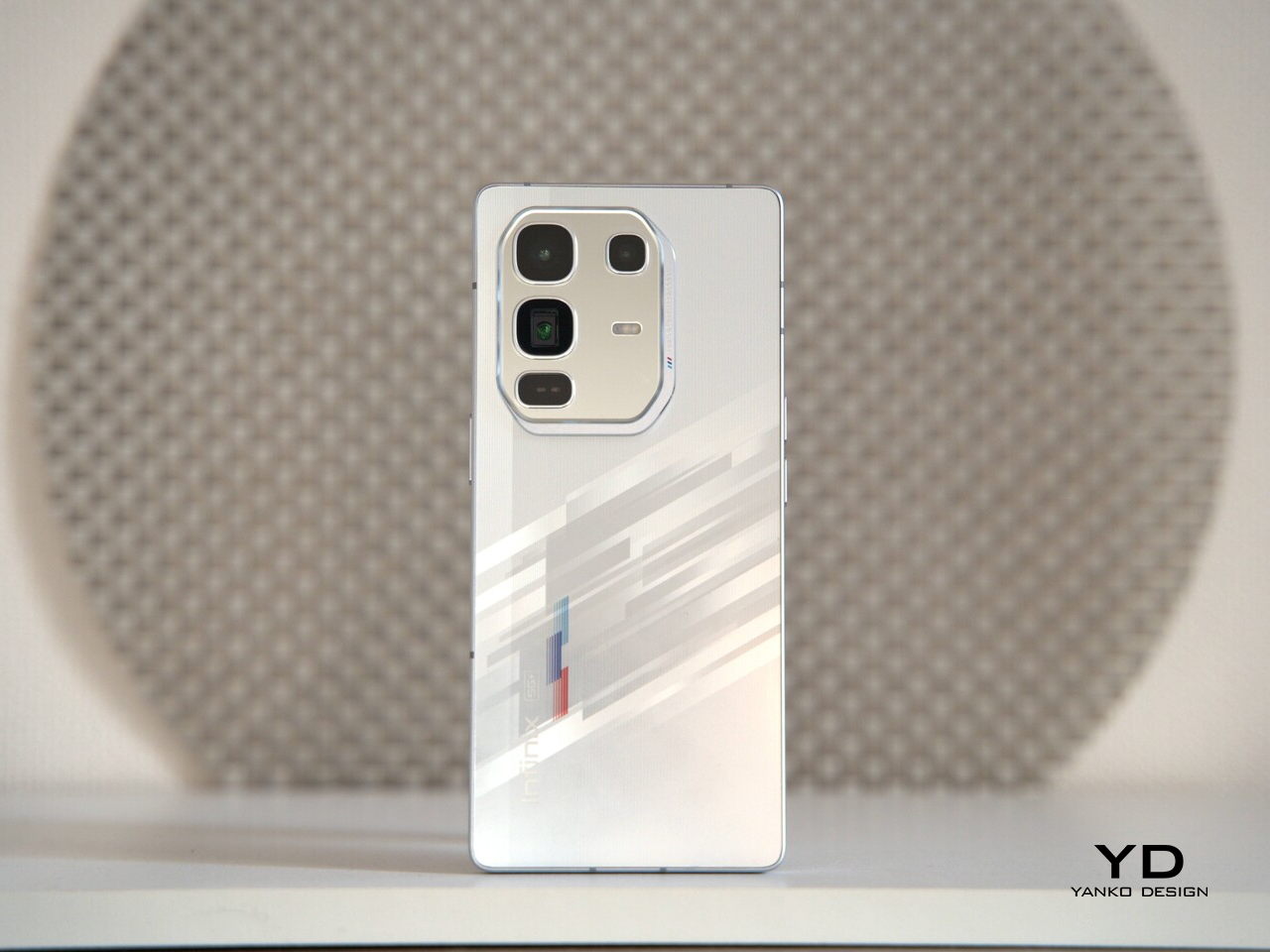Fujifilm Reimagines Photography with X half Premium Compact Digital Camera
Photography has remained fundamentally horizontal for over a century. Fujifilm’s latest creation shatters this convention with stunning simplicity. The new X half premium compact digital camera transforms how we capture images by embracing vertical orientation as its foundational design principle. This revolutionary approach acknowledges our smartphone-shaped world while delivering an experience distinctly separate from mobile photography. The camera challenges our assumptions about what photography tools should look like and how they should function. Its design speaks to a generation that consumes images vertically but craves tactile experiences beyond touchscreens.
Designer: Fujifilm
Design Origin & Philosophy
The X half emerged from Fujifilm’s experimental design workshops, where creative freedom flourishes without immediate commercial pressure. These sessions allow designers to explore concepts that challenge conventional thinking about cameras.
During one particularly productive workshop, a designer named Bueno presented a fully realized mock-up addressing his personal frustration with film photography’s ongoing costs. As noted in Fujifilm’s development history, Bueno loved shooting film but found it financially challenging, which sparked his creative solution. This origin story reveals a fascinating inversion of traditional product development cycles.
Bueno’s concept arrived as a complete physical design with no internal components or technical specifications. The engineering team faced the unusual challenge of building technology to fit an established form rather than designing around predetermined components.
Senior leadership immediately recognized the concept’s potential, supporting this rare bottom-up development process that preserved the designer’s original vision. The concept brilliantly translates half-frame film photography into digital form.
Traditional half-frame cameras, popular for their economy and distinctive aesthetic, captured two vertical images on a single 35mm film frame. This digital interpretation maintains that vertical orientation while eliminating film costs entirely. Fujifilm went further by incorporating intentional constraints that shape the photographic experience.
Physical Design & Ergonomics
The camera lacks image stabilization and captures JPEGs exclusively without RAW capability. These aren’t technical limitations but deliberate design decisions that encourage a specific relationship with photography. Users focus on composition and timing rather than post-processing possibilities or technical perfection. The design philosophy prioritizes the act of seeing over technical manipulation, encouraging photographers to develop their eye rather than their editing skills.
The X half weighs a mere 240 grams, lighter than many smartphones despite its purposeful construction. Its compact dimensionsmake it genuinely pocketable, fitting comfortably in standard jeans pockets without the awkward bulge larger cameras create.
Fujifilm selected a fixed 10.8mm F2.8 prime lens, equivalent to 32mm in traditional 35mm format. This focal length provides the perfect balance between environmental context and subject isolation. According to the product specifications, this specific field of view mirrors that of the beloved Fujifilm QuickSnap disposable cameras, creating an immediately familiar perspective that feels natural for everyday photography.
The most innovative physical element is undoubtedly the Frame Advance Lever. This mechanical component serves genuine functions beyond nostalgic decoration. Users physically advance the digital frame, combining two vertical images into diptychs or merging short video clips with still photographs. The tactile resistance of the lever makes each frame advance a deliberate act, reinforcing intentionality in image-making.
Interface & User Experience
Fujifilm reimagined the camera interface from first principles rather than adapting existing designs. The 2.4-inch touch screen provides intuitive control without overwhelming complexity. Traditional button arrays have been replaced with gesture controls that feel natural to digital natives while maintaining connections to analog processes.
The interface allows users to adjust the dividing line between frames. According to the technical documentation, photographers can select narrow, regular, or bold styles reminiscent of Instax prints, and even change the color between black and white. Switching between color and monochrome modes happens through simple, intuitive controls that don’t interrupt the photographic process.
The true interface innovation appears when connecting to smartphones. The camera simulates a film development process when transferring images. Users select which “roll” to import, initiating a development sequence that builds anticipation. The digital contact sheet displays edge codes that reference specific film simulations, such as “RTR” for retro filter.
This thoughtful replication of analog workflows transforms routine file transfer into a meaningful experience that enhances the photographer’s connection to their images. The menu system abandons conventional hierarchical organization for a more intuitive approach. Instead of burying options within nested submenus, the interface presents contextually relevant controls based on shooting mode and camera orientation.
This adaptive interface reduces the cognitive load on photographers, allowing them to focus on image-making rather than menu navigation. The system learns from user behavior, prioritizing frequently used settings for faster access.
Visual feedback appears through subtle animations that reference analog processes. When adjusting exposure compensation, a virtual needle moves across a scale reminiscent of light meters from manual cameras. These visual metaphors create intuitive understanding without requiring technical knowledge, making the camera accessible to photographers at all experience levels.
Image Quality & Creative Features
The X half’s output demonstrates its design philosophy most clearly. Fujifilm incorporated 13 Film Simulation modes based on their 90-year color science heritage. Each simulation offers unique characteristics that influence how photographers approach different subjects and lighting conditions.
The system goes further by incorporating three new creative filters inspired by film photography: Light Leak, which creates a slightly exposed look; Halation, a halo effect that appears around light sources; and Expired Film, which mimics the grainy look of older analog film. These elements come from an internal database of authentic film artifacts, applied without preview to reintroduce the element of surprise that made film photography exciting.
This unpredictability represents a deliberate design choice that restores the anticipation often missing from digital photography. Optional date stamping mimics the iconic corner-markings found on 1990s film cameras, enhancing the nostalgic experience for users familiar with physical prints.
The camera’s grain behavior connects to its advanced image processing engine, replicating organic and irregular patterns characteristic of traditional film. The vertical orientation influences composition in profound ways. By default, photographers naturally frame subjects differently when working in portrait format. This constraint encourages fresh perspectives on familiar subjects, breaking habitual compositional patterns that develop with horizontal framing.
Color science receives special attention through custom calibration for vertical subjects. The color rendering has been optimized for skin tones, architecture, and vertical landscapes, with subtle adjustments to saturation and contrast that complement vertically framed subjects.
Environmental Considerations
Fujifilm designed the X half with environmental impact in mind. The camera’s simplified internal architecture reduces component count compared to similar-sized digital cameras, minimizing resource consumption during manufacturing while extending potential service life through mechanical simplicity. The fixed lens eliminates the environmental impact of multiple lens production and transportation, reducing materials usage and packaging waste associated with interchangeable lens systems.
Most significantly, the X half’s design philosophy encourages users to value fewer, more meaningful images. This approach reduces the environmental impact of data storage and transfer while fostering a more sustainable relationship with photography itself. By emphasizing quality over quantity, the camera encourages a more mindful approach to image creation and consumption.
My Thoughts for Now
At USD, the X half targets photography enthusiasts seeking something beyond conventional cameras. Fujifilm clearly understands this camera serves a specific market segment rather than competing directly with multi-purpose devices. The price reflects both unique design and premium materials while offering value beyond technical specifications.
The camera’s pocketable size encourages daily carry, resulting in more frequent use than larger systems that often remain at home. This regular engagement creates more photographic opportunities, enhancing practical value. The fixed lens and simplified controls eliminate ongoing accessory costs while encouraging mastery of a single focal length.
The X half represents a significant departure from conventional camera design by challenging horizontal orientation as the default. Its most profound impact lies in embracing constraints as creative catalysts. Early testing revealed that while professional photographers initially expressed frustration, those willing to adapt discovered these limitations fostered creativity rather than restricting it.
“X half is special because it rekindles our love for the compact camera and blends it with the modern sensibilities that make it easy to make a part of our everyday lives,” explains Victor Ha, vice president of Electronic Imaging and Optical Devices Divisions at Fujifilm North America Corporation.
The camera arrives as design trends increasingly embrace digital interpretations of analog experiences. From skeuomorphic interfaces to vinyl record resurgence, consumers seek tangible, imperfect experiences within our digital world. What makes the X half truly innovative lies in its intentional subtractions from photography. By removing RAW capture options, limiting post-processing flexibility, and challenging horizontal orientation, Fujifilm creates something paradoxically nostalgic yet forward-looking.
The FUJIFILM X half compact digital camera will be available in late June 2025 at a Manufacturer’s Suggested Retail Price of USD and CAD.The post Fujifilm Reimagines Photography with X half Premium Compact Digital Camera first appeared on Yanko Design.
#fujifilm #reimagines #photography #with #half
Fujifilm Reimagines Photography with X half Premium Compact Digital Camera
Photography has remained fundamentally horizontal for over a century. Fujifilm’s latest creation shatters this convention with stunning simplicity. The new X half premium compact digital camera transforms how we capture images by embracing vertical orientation as its foundational design principle. This revolutionary approach acknowledges our smartphone-shaped world while delivering an experience distinctly separate from mobile photography. The camera challenges our assumptions about what photography tools should look like and how they should function. Its design speaks to a generation that consumes images vertically but craves tactile experiences beyond touchscreens.
Designer: Fujifilm
Design Origin & Philosophy
The X half emerged from Fujifilm’s experimental design workshops, where creative freedom flourishes without immediate commercial pressure. These sessions allow designers to explore concepts that challenge conventional thinking about cameras.
During one particularly productive workshop, a designer named Bueno presented a fully realized mock-up addressing his personal frustration with film photography’s ongoing costs. As noted in Fujifilm’s development history, Bueno loved shooting film but found it financially challenging, which sparked his creative solution. This origin story reveals a fascinating inversion of traditional product development cycles.
Bueno’s concept arrived as a complete physical design with no internal components or technical specifications. The engineering team faced the unusual challenge of building technology to fit an established form rather than designing around predetermined components.
Senior leadership immediately recognized the concept’s potential, supporting this rare bottom-up development process that preserved the designer’s original vision. The concept brilliantly translates half-frame film photography into digital form.
Traditional half-frame cameras, popular for their economy and distinctive aesthetic, captured two vertical images on a single 35mm film frame. This digital interpretation maintains that vertical orientation while eliminating film costs entirely. Fujifilm went further by incorporating intentional constraints that shape the photographic experience.
Physical Design & Ergonomics
The camera lacks image stabilization and captures JPEGs exclusively without RAW capability. These aren’t technical limitations but deliberate design decisions that encourage a specific relationship with photography. Users focus on composition and timing rather than post-processing possibilities or technical perfection. The design philosophy prioritizes the act of seeing over technical manipulation, encouraging photographers to develop their eye rather than their editing skills.
The X half weighs a mere 240 grams, lighter than many smartphones despite its purposeful construction. Its compact dimensionsmake it genuinely pocketable, fitting comfortably in standard jeans pockets without the awkward bulge larger cameras create.
Fujifilm selected a fixed 10.8mm F2.8 prime lens, equivalent to 32mm in traditional 35mm format. This focal length provides the perfect balance between environmental context and subject isolation. According to the product specifications, this specific field of view mirrors that of the beloved Fujifilm QuickSnap disposable cameras, creating an immediately familiar perspective that feels natural for everyday photography.
The most innovative physical element is undoubtedly the Frame Advance Lever. This mechanical component serves genuine functions beyond nostalgic decoration. Users physically advance the digital frame, combining two vertical images into diptychs or merging short video clips with still photographs. The tactile resistance of the lever makes each frame advance a deliberate act, reinforcing intentionality in image-making.
Interface & User Experience
Fujifilm reimagined the camera interface from first principles rather than adapting existing designs. The 2.4-inch touch screen provides intuitive control without overwhelming complexity. Traditional button arrays have been replaced with gesture controls that feel natural to digital natives while maintaining connections to analog processes.
The interface allows users to adjust the dividing line between frames. According to the technical documentation, photographers can select narrow, regular, or bold styles reminiscent of Instax prints, and even change the color between black and white. Switching between color and monochrome modes happens through simple, intuitive controls that don’t interrupt the photographic process.
The true interface innovation appears when connecting to smartphones. The camera simulates a film development process when transferring images. Users select which “roll” to import, initiating a development sequence that builds anticipation. The digital contact sheet displays edge codes that reference specific film simulations, such as “RTR” for retro filter.
This thoughtful replication of analog workflows transforms routine file transfer into a meaningful experience that enhances the photographer’s connection to their images. The menu system abandons conventional hierarchical organization for a more intuitive approach. Instead of burying options within nested submenus, the interface presents contextually relevant controls based on shooting mode and camera orientation.
This adaptive interface reduces the cognitive load on photographers, allowing them to focus on image-making rather than menu navigation. The system learns from user behavior, prioritizing frequently used settings for faster access.
Visual feedback appears through subtle animations that reference analog processes. When adjusting exposure compensation, a virtual needle moves across a scale reminiscent of light meters from manual cameras. These visual metaphors create intuitive understanding without requiring technical knowledge, making the camera accessible to photographers at all experience levels.
Image Quality & Creative Features
The X half’s output demonstrates its design philosophy most clearly. Fujifilm incorporated 13 Film Simulation modes based on their 90-year color science heritage. Each simulation offers unique characteristics that influence how photographers approach different subjects and lighting conditions.
The system goes further by incorporating three new creative filters inspired by film photography: Light Leak, which creates a slightly exposed look; Halation, a halo effect that appears around light sources; and Expired Film, which mimics the grainy look of older analog film. These elements come from an internal database of authentic film artifacts, applied without preview to reintroduce the element of surprise that made film photography exciting.
This unpredictability represents a deliberate design choice that restores the anticipation often missing from digital photography. Optional date stamping mimics the iconic corner-markings found on 1990s film cameras, enhancing the nostalgic experience for users familiar with physical prints.
The camera’s grain behavior connects to its advanced image processing engine, replicating organic and irregular patterns characteristic of traditional film. The vertical orientation influences composition in profound ways. By default, photographers naturally frame subjects differently when working in portrait format. This constraint encourages fresh perspectives on familiar subjects, breaking habitual compositional patterns that develop with horizontal framing.
Color science receives special attention through custom calibration for vertical subjects. The color rendering has been optimized for skin tones, architecture, and vertical landscapes, with subtle adjustments to saturation and contrast that complement vertically framed subjects.
Environmental Considerations
Fujifilm designed the X half with environmental impact in mind. The camera’s simplified internal architecture reduces component count compared to similar-sized digital cameras, minimizing resource consumption during manufacturing while extending potential service life through mechanical simplicity. The fixed lens eliminates the environmental impact of multiple lens production and transportation, reducing materials usage and packaging waste associated with interchangeable lens systems.
Most significantly, the X half’s design philosophy encourages users to value fewer, more meaningful images. This approach reduces the environmental impact of data storage and transfer while fostering a more sustainable relationship with photography itself. By emphasizing quality over quantity, the camera encourages a more mindful approach to image creation and consumption.
My Thoughts for Now
At USD, the X half targets photography enthusiasts seeking something beyond conventional cameras. Fujifilm clearly understands this camera serves a specific market segment rather than competing directly with multi-purpose devices. The price reflects both unique design and premium materials while offering value beyond technical specifications.
The camera’s pocketable size encourages daily carry, resulting in more frequent use than larger systems that often remain at home. This regular engagement creates more photographic opportunities, enhancing practical value. The fixed lens and simplified controls eliminate ongoing accessory costs while encouraging mastery of a single focal length.
The X half represents a significant departure from conventional camera design by challenging horizontal orientation as the default. Its most profound impact lies in embracing constraints as creative catalysts. Early testing revealed that while professional photographers initially expressed frustration, those willing to adapt discovered these limitations fostered creativity rather than restricting it.
“X half is special because it rekindles our love for the compact camera and blends it with the modern sensibilities that make it easy to make a part of our everyday lives,” explains Victor Ha, vice president of Electronic Imaging and Optical Devices Divisions at Fujifilm North America Corporation.
The camera arrives as design trends increasingly embrace digital interpretations of analog experiences. From skeuomorphic interfaces to vinyl record resurgence, consumers seek tangible, imperfect experiences within our digital world. What makes the X half truly innovative lies in its intentional subtractions from photography. By removing RAW capture options, limiting post-processing flexibility, and challenging horizontal orientation, Fujifilm creates something paradoxically nostalgic yet forward-looking.
The FUJIFILM X half compact digital camera will be available in late June 2025 at a Manufacturer’s Suggested Retail Price of USD and CAD.The post Fujifilm Reimagines Photography with X half Premium Compact Digital Camera first appeared on Yanko Design.
#fujifilm #reimagines #photography #with #half
·132 Ansichten








